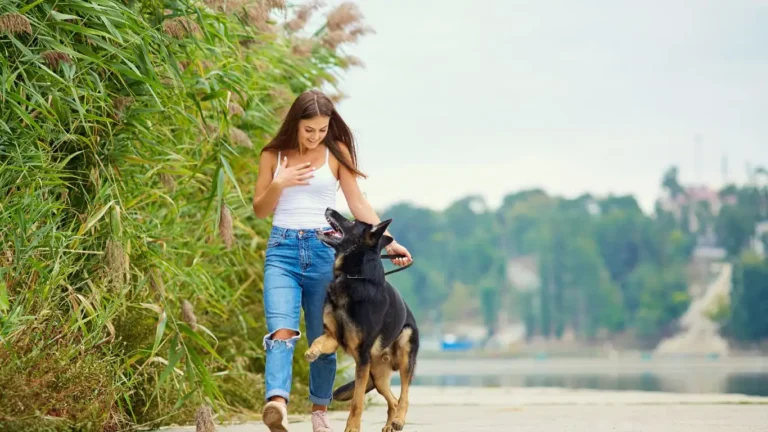How to Train a Dog to Wait at Doors Like a Pro for Safety and Control
Training your dog to wait at doors before exiting might seem like a simple task, but it’s one that requires patience, consistency, and a solid training approach. As a Canine-Assisted Therapy Trainer, I’ve seen firsthand how crucial this behavior is, both for safety and fostering better manners in dogs. If you’re wondering how to train a dog to wait at doors before exiting, you’re not alone.
Many dog owners struggle with this challenge, but with the right methods and a bit of dedication, you can teach your dog to wait calmly at the door, allowing you to take control of the situation and ensure a more enjoyable walk or outing.
Why Is It Important for Dogs to Wait at the Door?

Before jumping into the training process, let’s talk about why this behavior is so important. Teaching your dog to wait at doors isn’t just about showing them who’s boss; it’s about creating a sense of structure and discipline that benefits both you and your dog. As dogs are creatures of habit, they can get easily excited when they see a door open, but this behavior can lead to chaos, especially when you’re trying to leave the house in a hurry. It’s also crucial for safety, as some dogs may bolt out the door without any regard for traffic or other hazards, putting themselves (and you) in danger.
For therapeutic dog handlers, this kind of behavior is especially important. A dog’s ability to wait patiently at a door demonstrates their understanding of impulse control, which is a key aspect of therapy work. It’s also a great way to make sure that the dog is in the right frame of mind before starting any therapy sessions or public outings. But even if you don’t have a service dog, teaching your pet this skill ensures a well-mannered, safe dog in public spaces and at home.
How to Train a Dog to Wait at Doors Before Exiting: The Basics
The basic concept behind teaching your dog to wait at doors is simple: you want your dog to pause, stay calm, and only move once you give them the signal. This is a great exercise in impulse control, and it lays a strong foundation for more advanced behaviors down the road. I’ve found that breaking this task down into smaller steps helps both the dog and the owner succeed in the long run.
Step 1: Teach “Sit” and “Stay” First
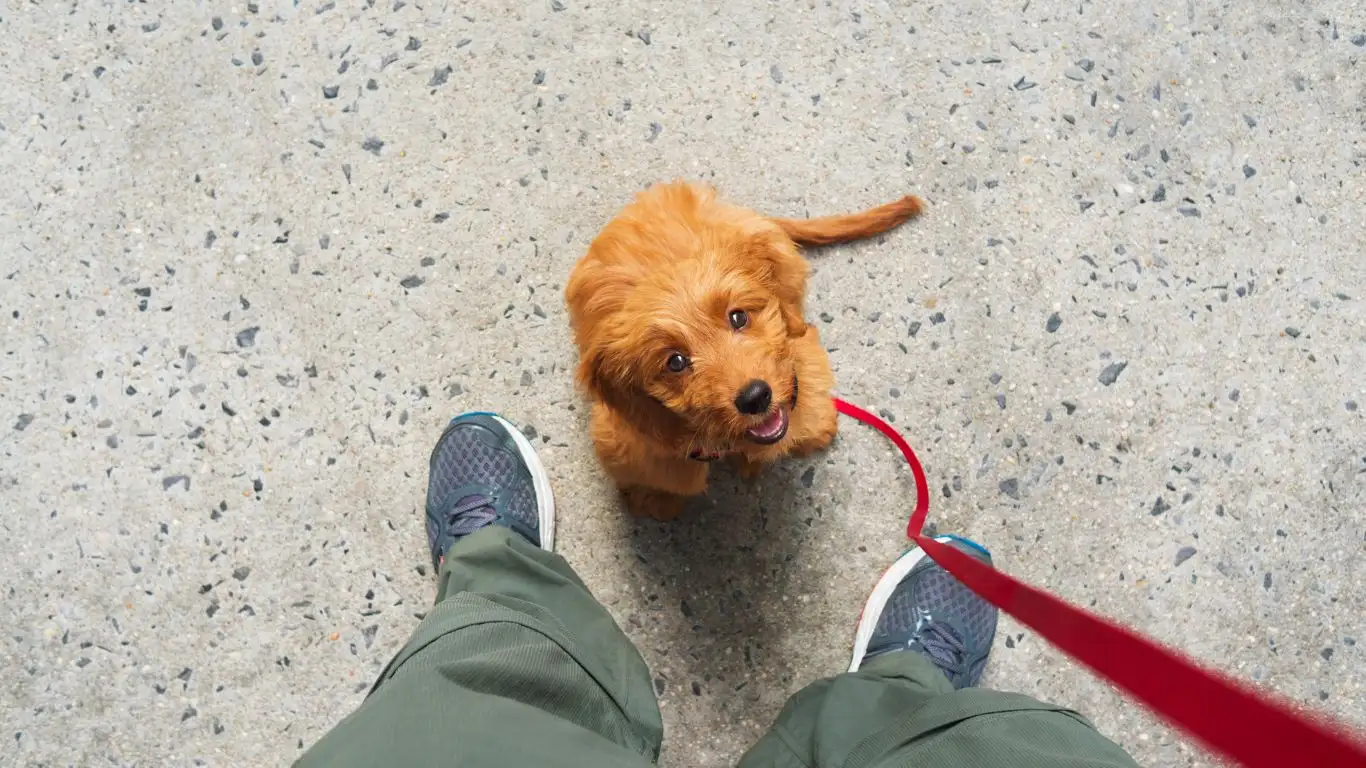
Before you can move on to door-specific training, it’s important to make sure your dog has a strong grasp on basic commands like “sit” and “stay.” Without these foundational skills, teaching them to wait at the door will be much harder.
- Teach Sit: Start by asking your dog to sit. Reward them with a treat and plenty of praise. Repeat this a few times to ensure they understand the command.
- Teach Stay: Once your dog has mastered “sit,” move to the “stay” command. Ask your dog to sit, then slowly step back while saying “stay.” Gradually increase the time and distance as your dog gets more comfortable with the command.
- Practice Consistently: Consistency is key when training your dog. Make sure to practice these commands daily in various environments to build your dog’s reliability.
When your dog can sit and stay reliably, you’re ready to move on to the next step in the process: door training.
Step 2: Introducing the Door
The first thing you need to do is introduce the door as an object that doesn’t signal chaos. Often, dogs associate the door with excitement, walks, or outings. By teaching them to remain calm when they see the door open, you can create a clear distinction between the excitement of leaving and the calm behavior you want to see.
- Start Slow: Begin by standing next to the door with your dog on a leash. Don’t open the door yet; simply stand still and reward your dog for calm behavior. If they start to get excited or move towards the door, immediately step back and reset.
- Gradually Open the Door: Once your dog is calm in the presence of the door, start to open it slightly while maintaining your position. If your dog tries to rush out, gently close the door and have them sit again. Repeat this process until they can remain seated and calm as the door opens.
- Reward Calmness: It’s crucial to reward your dog for calm behavior. Give them treats and praise when they remain seated or still while the door is being opened. This helps reinforce the idea that staying calm around the door is the desired behavior.
Common Mistakes to Avoid When Teaching Your Dog to Wait at the Door
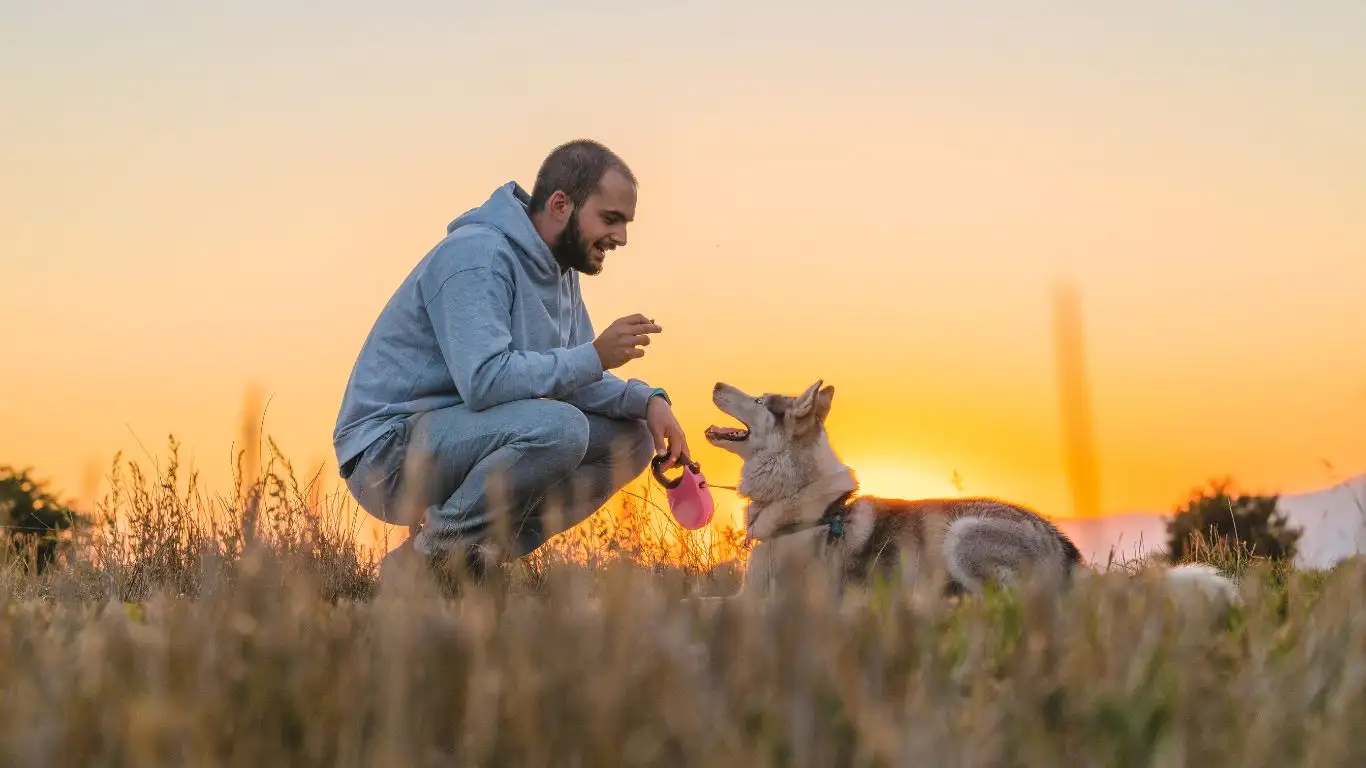
As simple as it may seem, there are a few common mistakes I see dog owners make when teaching this behavior. Here are some things to watch out for:
- Inconsistent Training: If you’re not consistent with your training, your dog will get confused. Make sure to practice daily, and ensure all family members are on the same page when it comes to commands.
- Rushing the Process: Patience is key. If you try to speed up the training process, your dog may not fully grasp the concept, leading to frustration on both sides. Take your time, and don’t skip steps.
- Not Rewarding Enough: Your dog needs positive reinforcement for good behavior. If you don’t reward them consistently, they may not understand which behaviors are expected. Be sure to offer treats, praise, or toys when your dog successfully waits at the door.
Now that you’ve got the basics down, you can start building on this foundation. In the next section, we’ll discuss more advanced techniques and how to handle challenges that may arise during training.
Advanced Techniques for Teaching Your Dog to Wait at the Door
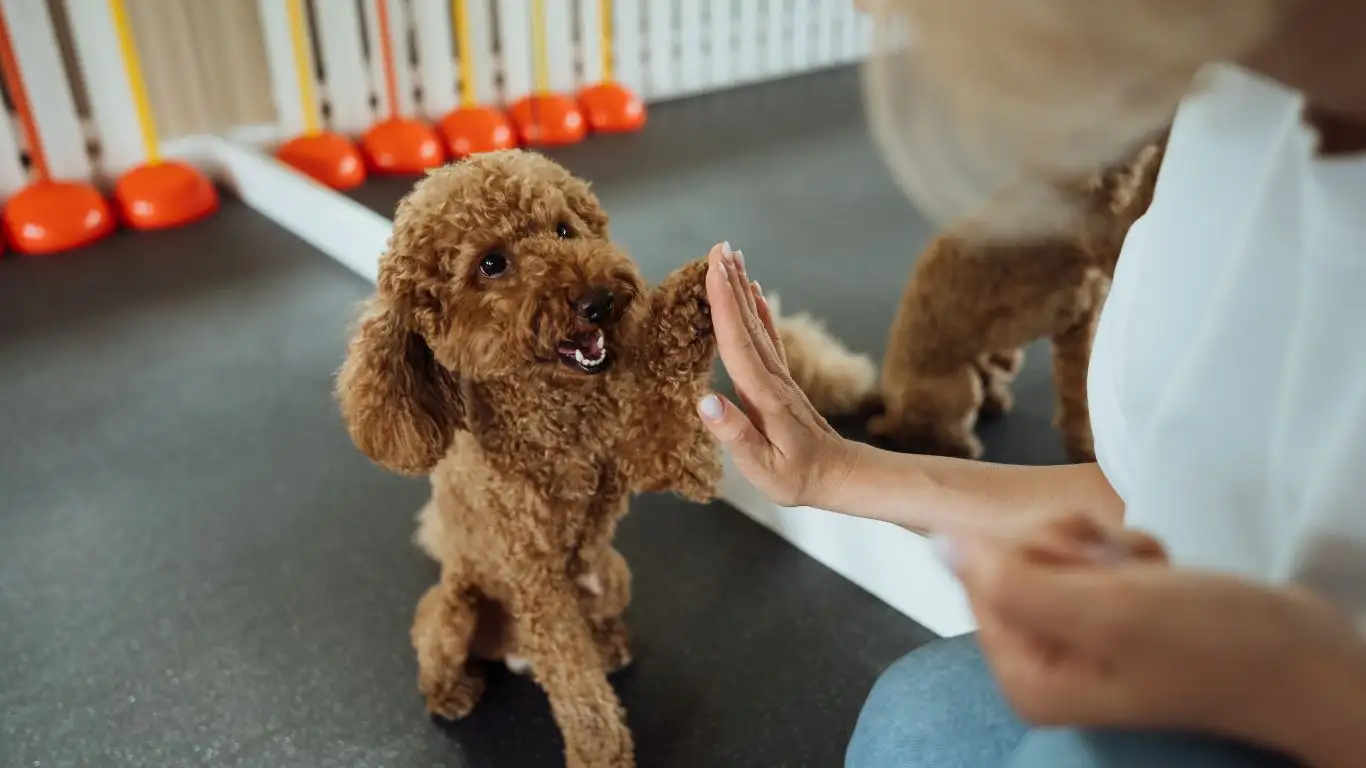
Now that you’ve mastered the basics of teaching your dog to wait at the door, it’s time to take things up a notch. As with any training, consistency and patience are key, but adding some advanced techniques will help refine your dog’s behavior and ensure they stay calm and controlled in various situations. I always tell my clients that just like humans, dogs need time to develop impulse control and build on their existing training. With that in mind, here are some tips for moving beyond the basics.
Step 3: Adding Distractions
One of the main challenges in training your dog to wait at the door is dealing with distractions. Whether it’s a knock at the door, the sound of footsteps, or even the rustle of a leash, distractions can throw your dog off track and make them more eager to bolt out the door. It’s important to gradually introduce these distractions while reinforcing calm behavior. Trust me, this part takes time, but it’s so worth it.
- Start with Low-Level Distractions: Begin by introducing minor distractions during your training sessions. For example, have a family member walk past the door or make a soft noise nearby. If your dog remains calm, reward them generously.
- Increase the Difficulty: Once your dog can stay calm with smaller distractions, try more challenging ones like ringing the doorbell or having someone stand outside the door. Keep the door closed, and allow your dog to focus on staying calm despite the increased level of disruption.
- Reward Calmness Under Distraction: Always reward your dog for maintaining their sit and stay position during distractions. If they break their focus and try to rush the door, calmly reset them and start again. Repetition is key here.
By gradually increasing the level of distractions, you’re teaching your dog to generalize the “wait” command, which is critical for ensuring that they remain calm and collected no matter what happens around the door.
Step 4: Reinforcing the “Release” Command
It’s easy to forget that your dog needs a clear cue to know when they are allowed to move. I’ve encountered many situations where dogs remain seated at the door but aren’t quite sure when to get up. This is where the “release” command comes in. This cue is incredibly important because it tells your dog when they’re allowed to go through the door.
- Introduce a “Release” Word: Once your dog has mastered waiting at the door, introduce a word or phrase that signals the end of the waiting period. This could be something like “okay,” “release,” or “let’s go.” The key here is to be consistent with whatever word you choose, so your dog knows exactly what to expect.
- Use Positive Reinforcement: When you give the release command, reward your dog with plenty of praise or a treat. This lets them know that the behavior they’ve shown—waiting patiently—is exactly what you wanted.
- Practice the Release with Low-Distraction Scenarios: Start practicing the release command when there are fewer distractions, so your dog associates it with calm and controlled behavior. Over time, they’ll learn that they don’t need to rush out of the door as soon as it opens.
Incorporating a clear release command is the final piece of the puzzle when teaching your dog to wait at doors. With the right cue, your dog will understand that they don’t just get up whenever they please, but rather when you tell them it’s okay to do so.
Common Challenges and How to Overcome Them

As with any dog training process, teaching your dog to wait at doors isn’t without its challenges. Over the years, I’ve worked with many clients and their dogs, and while each dog is unique, a few common challenges always seem to arise. Here’s how you can overcome them:
Challenge 1: Dog Gets Overexcited at the Door
One of the most common issues I encounter is dogs who get too excited when they see the door open. This excitement can cause them to jump, bark, or rush out before you can even get the leash on them. If your dog is too excited, it’s going to be difficult to maintain control, but there are a few ways you can address this.
- Keep Calm Yourself: Dogs are incredibly intuitive and often mirror their owner’s energy. If you stay calm, your dog is more likely to stay calm too. Take a deep breath before opening the door and try to stay composed.
- Reinforce Calm Behavior: As soon as your dog begins to get too excited, immediately stop what you’re doing. Reset them by asking for a “sit” and “stay,” and only reward them when they’re calm. Avoid opening the door until your dog shows signs of relaxation.
- Use a Leash for Extra Control: When your dog is learning to wait at the door, using a leash can give you added control. If they get too excited, you can gently guide them back into a calm position without using force.
Challenge 2: Dog Attempts to Bolt Out the Door
Some dogs are more prone to bolting out the door, especially if they’re not used to waiting. If this is happening, it’s important to nip this behavior in the bud early on. Otherwise, it could become a serious safety concern.
- Control the Environment: If your dog is prone to bolting, try training in a more controlled environment. For instance, practice the training with a door that’s not directly connected to the outside world, like a bathroom door, to reduce the temptation of rushing outside.
- Use the “Wait” Command: A well-timed “wait” command, before you even open the door, can help remind your dog to stay put. Reward them for staying in place and only open the door when they’re calm.
- Don’t Open the Door if They’re Not Calm: If your dog bolts toward the door, immediately close it and have them sit again. Only reward them with the opportunity to leave when they’ve demonstrated calm behavior. This helps reinforce that rushing doesn’t get them what they want.
Dealing with these challenges can be frustrating, but with consistency and patience, your dog will learn to wait at the door like a pro. In the next section, we’ll discuss how to handle situations when your dog doesn’t seem to “get it” and some troubleshooting tips to help with your training process.
Troubleshooting: What to Do If Your Dog Isn’t Getting It
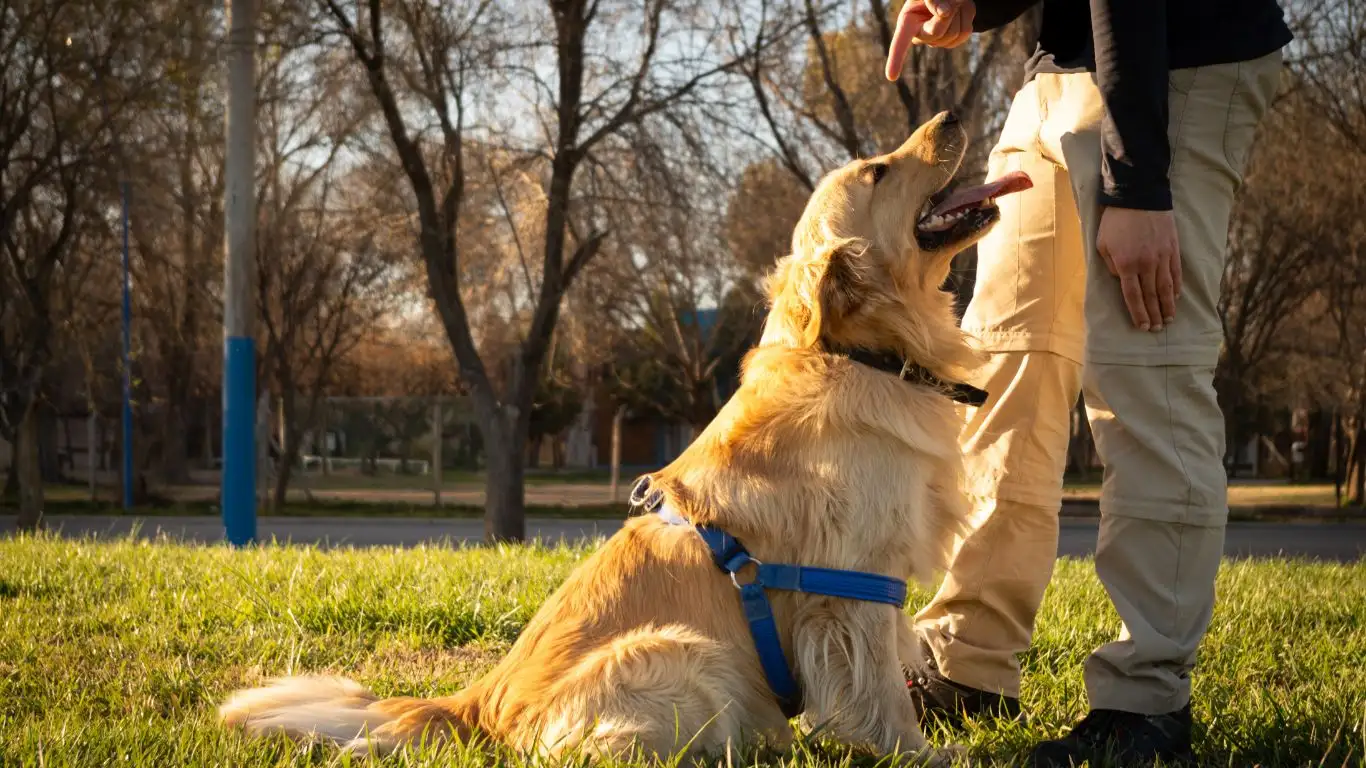
If your dog is still struggling with the “wait at the door” behavior, don’t get discouraged! It’s normal for some dogs to take longer to grasp certain commands, especially when distractions and excitement are involved. As a Canine-Assisted Therapy Trainer, I’ve seen dogs that initially struggled, only to become patient and well-behaved door greeters with a little extra effort and troubleshooting. If you’re facing setbacks, it’s time to tweak your training routine and take a fresh approach.
1. Going Back to Basics
Sometimes, a dog just needs to revisit the basics. If your dog seems confused or overwhelmed, simplify the process. You might have advanced too quickly, or perhaps distractions have caused them to lose focus. It’s okay to take a step back!
- Revisit Sit and Stay: Before you continue practicing waiting at the door, make sure your dog has a solid understanding of the “sit” and “stay” commands. If they struggle with these basics, it’s best to re-establish them first. A dog that’s comfortable with these foundational commands will have an easier time when you introduce more complex training like waiting at the door.
- Shorten Training Sessions: Keep your sessions short and sweet. If you’re doing long training sessions, your dog might lose focus or become frustrated. Aim for short 5-10 minute sessions to keep your dog’s attention sharp and to avoid overwhelming them.
By returning to these basics, you can re-establish a stronger foundation for your dog’s door training. Once you’ve had some successful short sessions, gradually reintroduce the door and more challenging distractions.
2. Managing Frustration and Impatience
It’s completely natural for both you and your dog to experience frustration during training. After all, you’re both trying to learn something new! The key to managing frustration is to stay calm and patient. I can’t tell you how many times I’ve seen owners get upset when their dogs don’t seem to understand a command after a few attempts. But frustration from either side can hinder the training process, so it’s important to remain as patient as possible.
- Take Breaks: If either you or your dog starts feeling frustrated, it’s a good idea to take a short break. Go for a walk, or do a different training exercise that your dog enjoys. A reset can make a world of difference and help you both regain focus.
- Celebrate Small Wins: Every step toward success counts! If your dog managed to stay calm for even a few seconds at the door, give them plenty of praise. These little victories build up over time and keep the training positive for both of you.
Training should always be a fun and positive experience for both you and your dog. If you feel like things aren’t going well, a little break and some encouragement can help reset the process.
3. Dealing with Reinforcement Schedules
Another potential roadblock is reinforcement. If you’re not reinforcing the right behaviors or doing so inconsistently, your dog may struggle to learn what’s expected of them. Dogs rely on rewards to understand that they’re doing the right thing, but not all rewards are created equal. Sometimes, dogs get accustomed to certain rewards (like treats) and may stop responding to them as effectively.
- Vary Your Rewards: Mix up your rewards so your dog doesn’t get bored. For instance, you might use a combination of treats, praise, toys, or even a quick game of tug. If your dog begins to lose interest in treats, try switching to a favorite toy or a fun play session as a reward.
- Be Consistent with Timing: Timing is everything. Reward your dog immediately after they perform the desired behavior. If you wait too long to give the reward, your dog may not associate it with the correct action.
Keep the reinforcement consistent, but don’t be afraid to shake things up with different types of rewards. This helps keep your dog motivated and engaged during training sessions.
Expanding the Skill: Making It a Part of Daily Life

Once your dog has mastered waiting at the door in controlled settings, it’s time to start making the behavior a natural part of your daily routine. Dogs thrive on structure, and by incorporating this behavior into your everyday life, you’re helping them internalize the “wait at the door” concept.
1. Practice Multiple Times a Day
One of the most effective ways to solidify this behavior is to practice it multiple times a day. You don’t need to wait for a special training session—use real-life situations to reinforce the behavior. For instance, when you go out for a walk, ask your dog to wait at the door before exiting. If you’re leaving for work, have your dog practice the “sit and stay” routine each time you head out.
The more frequently you practice, the more ingrained this behavior will become. I often tell my clients that “training isn’t a one-time thing” but a continuous process that builds over time. The more opportunities you give your dog to practice, the more natural it will become for them.
2. Set Boundaries for the Door
It’s also helpful to set clear boundaries around the door. If your dog tends to rush toward the door when it’s not time to leave, you can establish boundaries such as using a leash to guide them or creating a physical barrier. The more clear you are with your expectations, the easier it will be for your dog to follow the rules.
Even if you don’t plan to leave the house every time, make it a habit for your dog to stay in place when you approach the door. This consistency will help your dog develop a stronger understanding of what you expect from them when it comes to door manners.
References and Resources
For more tips on dog training and behavior, I recommend checking out the following reputable sources:
- American Kennel Club (AKC) – A trusted resource for all things dog training, including articles and tips for behavior modification.
- Dog Training Nation – A great site for professional dog training advice, with a variety of guides for training and problem-solving.
- PetMD – A reliable site for understanding dog health and behavior, including tips on training challenges.
Disclaimer
The information provided in this article is based on my personal experience as a Canine-Assisted Therapy Trainer and general dog training principles. Each dog is unique, and what works for one may not work for another. Always consult with a professional dog trainer or veterinarian if you’re unsure about any part of your dog’s training or behavior. This article is intended for educational purposes only and should not replace professional advice.

